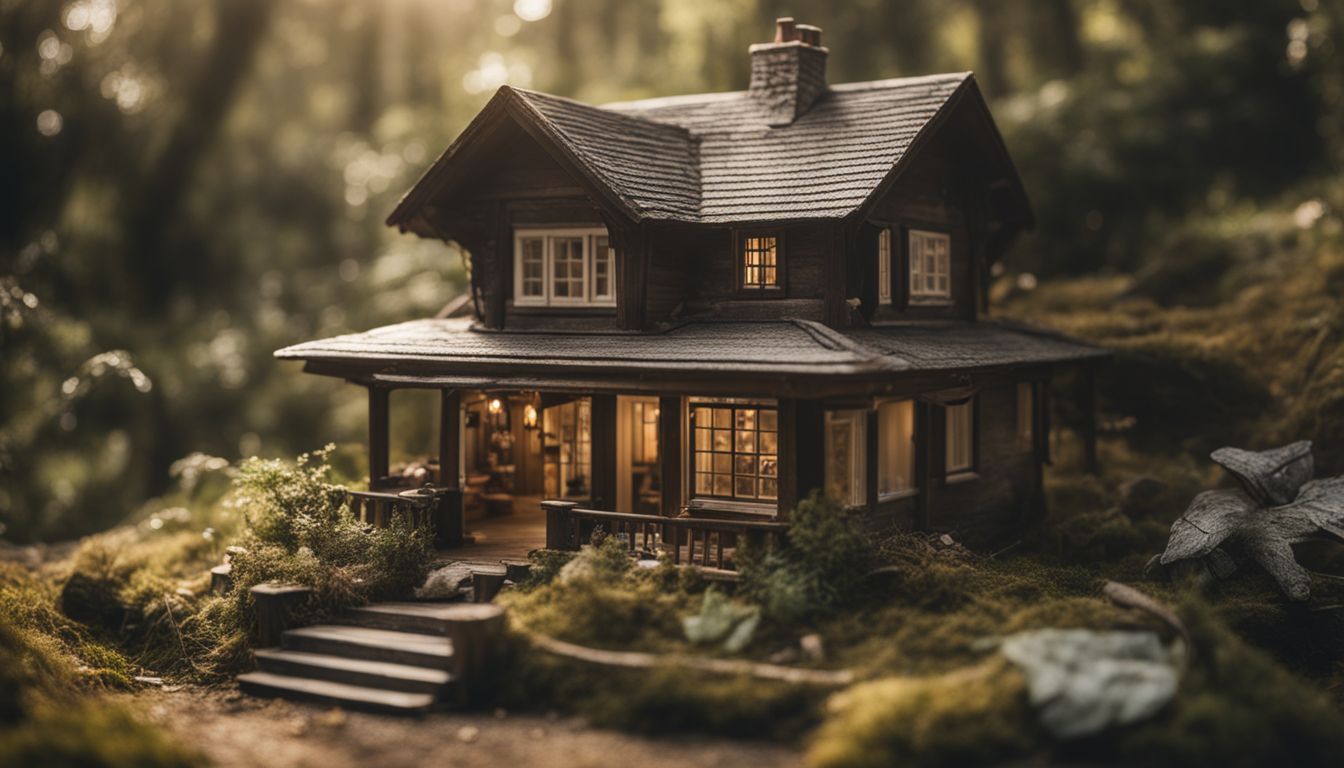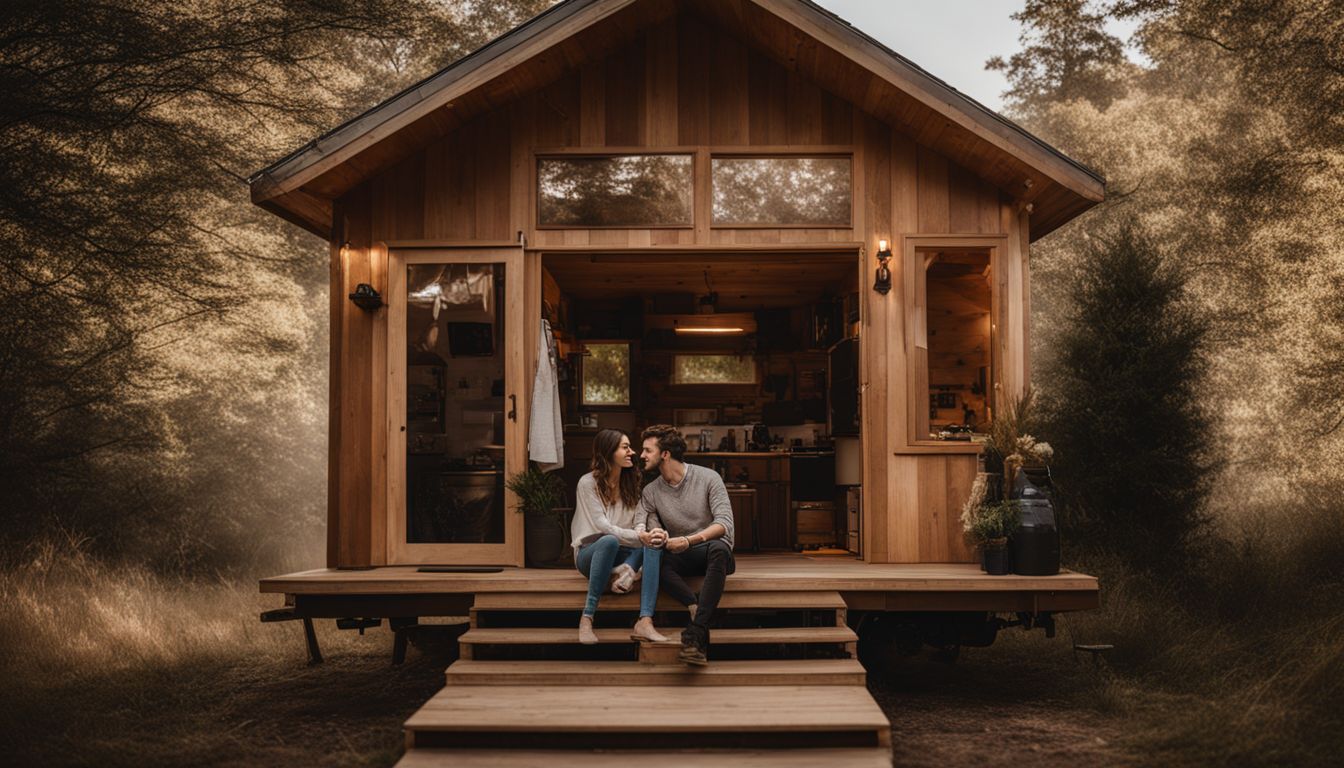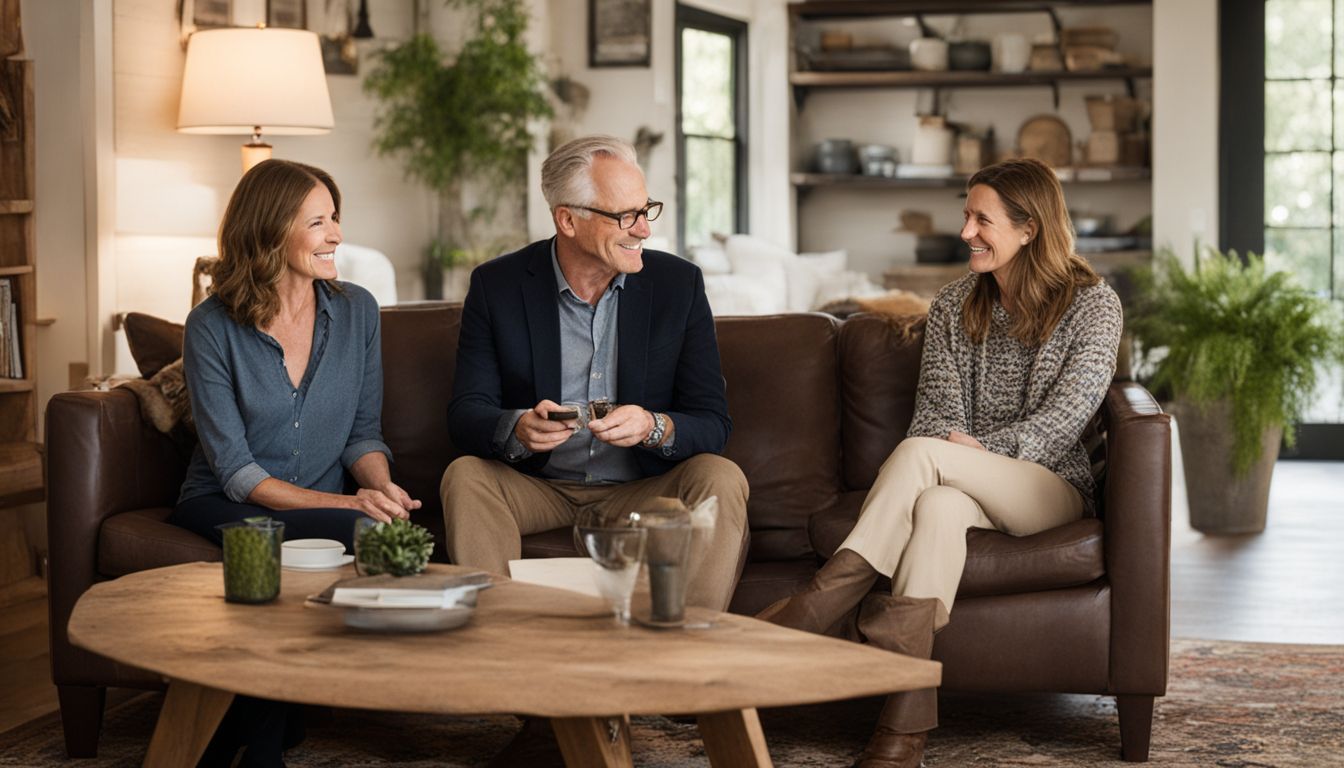
By: TinyNest Chronicles
Who Started the Tiny House Movement: Unveiling the Origins
Searching for affordable housing solutions? The tiny house movement offers an intriguing answer. This trend, kickstarted by Jay Shafer‘s innovative small home design in the early 2000s, promotes simpler living in smaller spaces.
Our article will guide you through its origins, key players, and impact on housing today. Discover more—keep reading.
Key Takeaways
- Jay Shafer kickstarted the tiny house movement in the early 2000s by creating a mobile home on wheels. His design encouraged people to live more simply and with less space.
- Sarah Susanka contributed to the movement with her book “The Not So Big House,” showing how smart design can make small spaces feel larger without adding more square footage.
- The tiny house movement has evolved over time to include various types of homes like park model homes, shipping container homes, and cabins, catering to different lifestyles while promoting minimalism and sustainability.
- Despite legal challenges around zoning laws and regulations for tiny homes, the movement continues to grow in popularity both in America and internationally as more people seek simpler, more sustainable ways of living.
The Concept of the Tiny House Movement

The tiny house movement is all about living simply in small homes. People choose tiny houses to downsize their lives and live with less. This trend promotes using less space and fewer resources, making it a minimalist approach to homeownership.
Tiny homes often have just what someone needs — a place to sleep, eat, and relax without the extra space that larger houses offer.
Jay Shafer kicked off this movement in the early 2000s by creating a mobile home on wheels that was both functional and small. He showed how you could live comfortably in a space much smaller than traditional houses.
The idea caught on, leading others to consider tiny living as an alternative lifestyle. It’s not just about having a smaller house; it’s also trying to make life simpler and more straightforward.
Now let’s look at the pioneers who made tiny houses what they are today.
The Pioneers of the Tiny House Movement

Jay Shafer and Sarah Susanka played pivotal roles in pioneering the tiny house movement, each contributing unique perspectives that propelled its growth. Their ideas and designs have shaped the modern landscape of small living, influencing an entire generation of tiny house enthusiasts.
Jay Shafer’s Influence
Jay Shafer sparked a revolution in living spaces with his innovative small house on wheels. In the early 2000s, he took a bold step and created a mobile home that would fit on a trailer bed, setting the stage for what we know today as the tiny-house movement.
His actions challenged traditional views on housing, showing people all over America that bigger isn’t always better. This approach not only encouraged others to consider tiny homes but also led to Shafer being recognized as a pioneer of simple living.
Living large means living small. – Jay Shafer
He founded the Tumbleweed Tiny House Company, becoming a beacon for those looking to downsize their homes without downsizing quality of life. Through articles and advocacy, Shafer educated many about the benefits of minimalist dwelling units—freedom from excessive possessions and debt being key among them.
His work has left an indelible mark on both architecture and social movements, promoting smaller footprints both physically and environmentally across communities worldwide.
The Role of Sarah Susanka
After Jay Shafer sparked interest in tiny living, Sarah Susanka brought her own vision. She wrote a book called “The Not So Big House.” This book changed how many see their living spaces.
It wasn’t just about going tiny. Instead, it was making the most of every space you have.
Sarah shared from her experience as an architect. She saw big homes waste space and resources. So, she suggested designs that felt bigger without adding square feet. Her ideas helped people see value in smaller, smarter houses over bigger ones with unused rooms.
Through her books and talks, she inspired others to rethink what makes a home right for them.
Evolution of the Tiny House Movement
The tiny house movement has evolved significantly from its early beginnings in the 2000s. Initially, it was largely about downsizing and embracing minimalism; however, over time, it has expanded to include various types of tiny homes such as park model homes, shipping container homes, and cabins with a focus on rustic living.
The movement has gained widespread popularity across America and internationally. What started as a trend is now an architectural and social movement focused on promoting simpler living spaces.
Jay Shafer’s influence cannot be overstated in jumpstarting this movement through his articles advocating for simple living. The international community’s support for the tiny house movement further underpins its ever-evolving status.
However, there are ongoing discussions around legal definitions and regulations governing tiny homes due to their increasing popularity. Despite these complexities, the tiny house lifestyle continues to grow globally as people seek more than just housing – they aim for a unique way of life designed to enhance sustainability and reduce environmental impact.
Entities: Jay Shafer, Park Model Homes, Shipping Container Homes, Cabins with Rustic Living
Tools: Minimalist Living Movement
Different Types of Tiny Homes
Tiny homes come in various forms—such as park model homes, shipping container homes, and cabins—that cater to different lifestyles and preferences. Discover more about the diversity of tiny home living by exploring our detailed blog.
Park Model Homes
Park model homes, also known as park trailers, are compact yet luxurious dwellings designed for placement in RV parks or campgrounds. These units are larger than typical tiny houses and can range from 320 to 400 square feet, offering a comfortable and convenient living space.
Park model homes typically feature stylish interiors with modern amenities such as full-size appliances, spacious kitchens, and well-appointed bathrooms. They are built on a wheeled chassis for easy transportation and offer the flexibility of being placed in various recreational settings while providing an attractive option for those seeking a balance between mobility and comfort.
These unique homes provide an excellent solution for individuals or families looking to downsize without sacrificing comfort or style. Embracing the allure of outdoor living combined with modern design elements such as open floor plans, these residences cater to both vacationers seeking relaxation and urban dwellers desiring a peaceful retreat away from city life.
Shipping Container Homes
Shipping container homes are an innovative way to create sustainable and cost-effective living spaces. These homes repurpose unused shipping containers, providing a sturdy and eco-friendly foundation for residential dwellings.
The versatility of these containers allows for customizable designs, making them a popular choice among those seeking unique and modern housing solutions. With the ability to withstand extreme weather conditions and their modular nature, shipping container homes offer an efficient alternative in the realm of affordable and environmentally conscious living.
Moving on from the concept of shipping container homes, let’s explore the fascinating world of Cabins and Rustic Living as part of our journey into unconventional housing options.
Cabins and Rustic Living
Moving from the practicality of shipping container homes, we delve into cabins and rustic living, an enchanting facet of tiny house culture. Think cozy log cabins nestled in serene woods or charming cottages with vintage appeal.
Cabins exude a timeless charm that resonates with nature enthusiasts and those seeking a simpler way of life. With their warm wood interiors, exposed beams, and natural surroundings, they offer an idyllic retreat from the hustle and bustle of modern living.
Dotted across tranquil landscapes or perched alongside glistening lakes, these abodes offer an immersive experience in nature. They integrate seamlessly into their surroundings while providing snug havens for relaxation and contemplation—invoking feelings of nostalgia for quaint simplicity yet catering to modern comforts.
The Current State of the Tiny House Movement
The tiny house movement has gained widespread popularity, with tiny homes popping up across America and gaining international attention. Despite initial concerns about losing its purpose, the movement continues to grow as an architectural and social phenomenon promoting simple living.
However, discussions about legal regulations regarding tiny homes indicate ongoing debates in the realm of housing laws. Not only did Jay Shafer jumpstart this ever-evolving movement by praising simple living 20 years ago, but various individuals and communities have also supported it over time.
It is evident that the influence of the tiny house movement goes beyond America’s borders – it has found supporters internationally.
Conclusion
The tiny house movement started in the early 2000s, with Jay Shafer as a key pioneer. Sociologist Caroline Bartlett Crane also contributed to the trend back in 1924. Today, it has gained widespread popularity across America and internationally.
The movement’s purpose and legal regulations have sparked debates and discussions. Despite its origin in the United States, it has garnered attention worldwide.